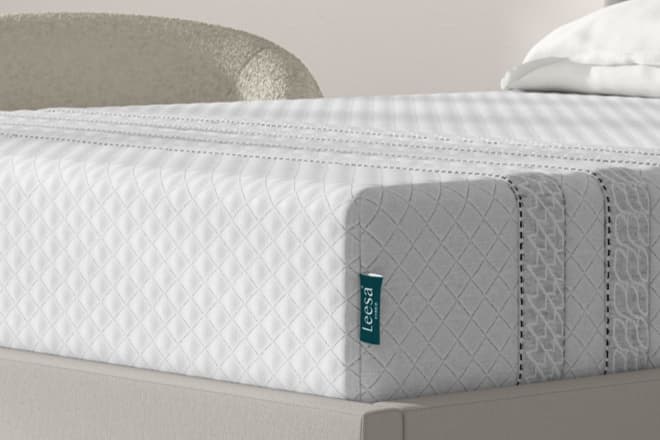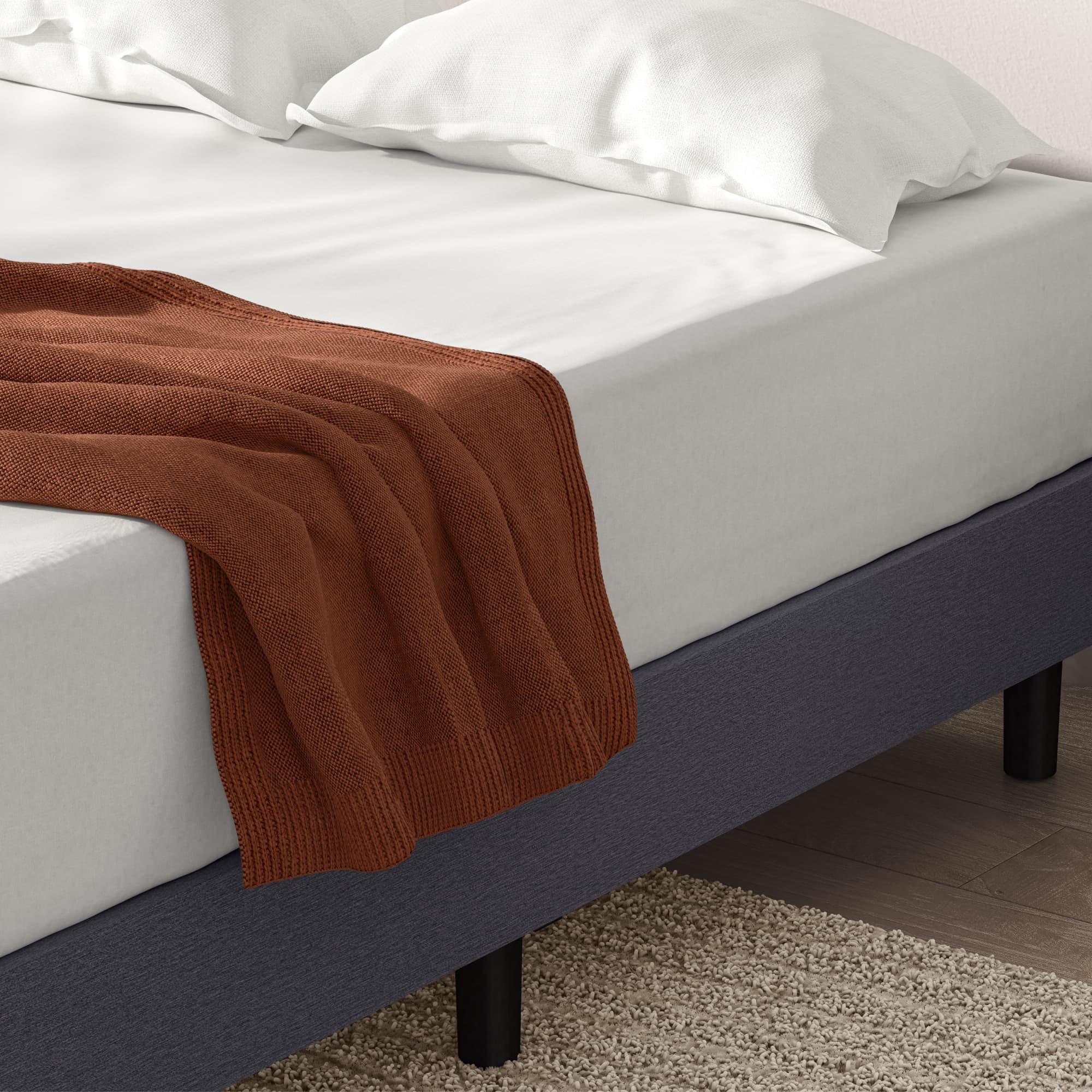When it comes to modern, comfortable mattress designs, hybrid mattresses and memory foam mattresses are both very popular options. But, what's the difference between these two mattress types?
In this article, our mattress experts break down some of the different builds and designs of these two attractive mattress options. They’ll also illustrate some of the pros and cons involved in purchasing one or the other. Which one is best for you?
What Is a Hybrid Mattress?
A hybrid mattress combines some traditional coil spring technology with a support layer of foam and other materials.
Basically, you get the best of both worlds with this innovative type of modern mattress.
The spring coil system was the traditional way to make most mattresses. But it had its drawbacks— in the form of failing springs, or springs poking through the mattress, and other kinds of wear.

Eventually, manufacturers started combining spring coils with other newer mattress technologies, and the hybrid mattress was born.
The interior build of a hybrid mattress is comprised of three fundamental layers that are piled on top of one another.
Top Layer - The top layer is the comfort layer, which may be made with polyurethane and foam. Engineers have also used different kinds of latex as well as some kinds of gel in the comfort layer design.
Support Layer - Underneath the top layer you have a support layer that may be about seven to eight inches in depth.
This is where you have the innovative modern coils that are wrapped in a way that traditional mattresses were not. This is important for a number of reasons. First, it cuts down on noise. Second, it cuts down on airflow. And third, it provides a certain kind of softness in terms of the mattress feel.
Base Layer - Underneath both of these is the base layer, which might be about two inches thick.
The base layer has memory foam or a similar material. You can compare it in some ways to the base put under a stone or brick installation to deal with any eventual settling. In other words, the base layer supports the two layers above it.
What Is a Memory Foam Mattress?
The memory foam mattress is a fantastic alternative to the traditional spring coil design.
Memory foam beds don't have any coils at all. Instead, they have a collection of materials made of polyurethane and others that mold to the shape of your body.
Essentially, the build of memory foam mattresses is something that experts refer to as ‘viscoelastic.’ This describes how that mattress doesn't just bounce back up when there is pressure put on it, but instead creates a kind of contoured mold. You might also call this a ‘low resilience’ mattress for the same reason.
A memory foam mattress actually softens with body heat, and then it retains that heat because there is no open space internally around the springs. One side note here, though, is that many hybrid mattresses have spring coils that are wrapped (as mentioned above), which also changes airflow.
What Are the Pros and Cons of a Hybrid Mattress?
Hybrid Mattress Pros
Balanced resistance- Since it combines the two technologies, the hybrid mattress has balanced resistance. It offers a mix of firmness and yield that many sleepers like. For example, people who not only side sleep but also sleep on their backs or stomachs may want this kind of flexible yield.
No poking springs- Because of the combined layers and the way the springs are protected, you're never going to really know that they’re there. So the hybrid mattress has this advantage over traditional mattress builds.
Edge support- With a hybrid mattress, the coils are distributed all over the mattress. So you get the same support at the edge that you would at the center.
Less motion transfer- The hybrid mattress doesn't transfer motion the way traditional mattresses do. So you don't feel like you're on a sinking ship when someone else lies down on the other side of the mattress. Or, to put it another way. If you have people jumping on the bed, you're not going to have as much elasticity as you had with the traditional coil beds. Which kids find fun to jump on because they were in some ways like a trampoline.
Comfortable sleep- To put it in the simplest of terms, the hybrid mattress just offers that balance that gives people a comfortable sleep at night. Changing from a traditional mattress to a hybrid mattress can allow people to improve symptoms like:
- Headaches
- Joint or muscle aches
- Insomnia
- Chronic fatigue
- Back pain
Hybrid Mattress Cons
Cost- Because of the complexity of the mattress build, these mattresses can cost a bit more than other alternatives.
Weight- Compared to a traditional mattress and box spring, the hybrid mattress may weigh a bit more and may require two people to move.
Less heat retention- Memory foam mattresses tend to trap body heat, which some people enjoy.
The hybrid mattress doesn't do this as much, although it does do it better than a traditional mattress type.
Memory Foam Pros
Moldable- The materials in the memory foam mattress are uniquely designed to mold to the body. With that in mind, if you want a less firm mattress that offers resistance according to your body contour? The memory foam mattress is the way to go.
No motion transfer- Since there are no springs in this type of mattress, you won't feel it moving on impact. These are very stable and quiet types of mattresses, and if you have ever been annoyed by creaking springs? This is the mattress for you.
Hypoallergenic- These mattresses are also a top choice for people who struggle with allergies. It's not only because the materials themselves are hypoallergenic, but also because with no springs, there is no interior air or airflow. Which can raise allergens and distribute them around your room.
Memory Foam Cons
Less balance- There is a reason that people talk about the balanced support of hybrid mattresses. They have a sophisticated build that delivers specific results, whereas a memory foam mattress does not.
The memory foam mattress, by contrast, has a single foam core technology. It can also be less firm, meaning that you can sink into it.
How Can Leesa Help You Get a Better Night's Sleep?
The sleep experts at Leesa can help you decide which of these two different mattress types will suit your specific needs the best.
It's absolutely true that a new mattress will help you sleep better. Having the right information about mattress types helps you make a decision about how to build your dream bed for better rest.
FAQs
How to Clean a Hybrid Mattress?
When it comes to cleaning the hybrid mattress, you want to take a specific approach that will not get your mattress wet. First, experts recommend vacuuming your mattress to remove any type of buildup or dust particles that have made their way onto the bed. After that, you can spot clean any stains with a mixture of water and hydrogen peroxide.
The key here is to use a small amount of liquid cleaner. Too much will soak or inundate the mattress and cause various problems. If too much moisture gets into the wrapped coil design, that can be an issue as well. After this has been done, you can dry the area. Using a bit of baking powder or some other moisture-absorbent item can help.
How Long Will a Hybrid Mattress Last?
How long a hybrid mattress lasts depends on the build and the design as well as other factors. If cared for correctly, your hybrid mattress can be expected to last about 10 years. We suggest that after 10 years you can look at the wear on your mattress and decide whether it's time to replace it.
How to Clean a Memory Foam Mattress?
In cleaning a memory foam mattress, the process is much the same as it is with the hybrid mattress. That's because the two top layers are made of similar materials.
What Is a Memory Foam Mattress Made Of?
Manufacturers and engineers have come up with their own proprietary combinations of materials for a memory foam mattress. Although, as mentioned, it often includes polyurethane and certain kinds of foam and gel materials.
How Long Will a Memory Foam Mattress Last?
A memory foam mattress will last for around 10 years.
.jpg&w=3840&q=75)


